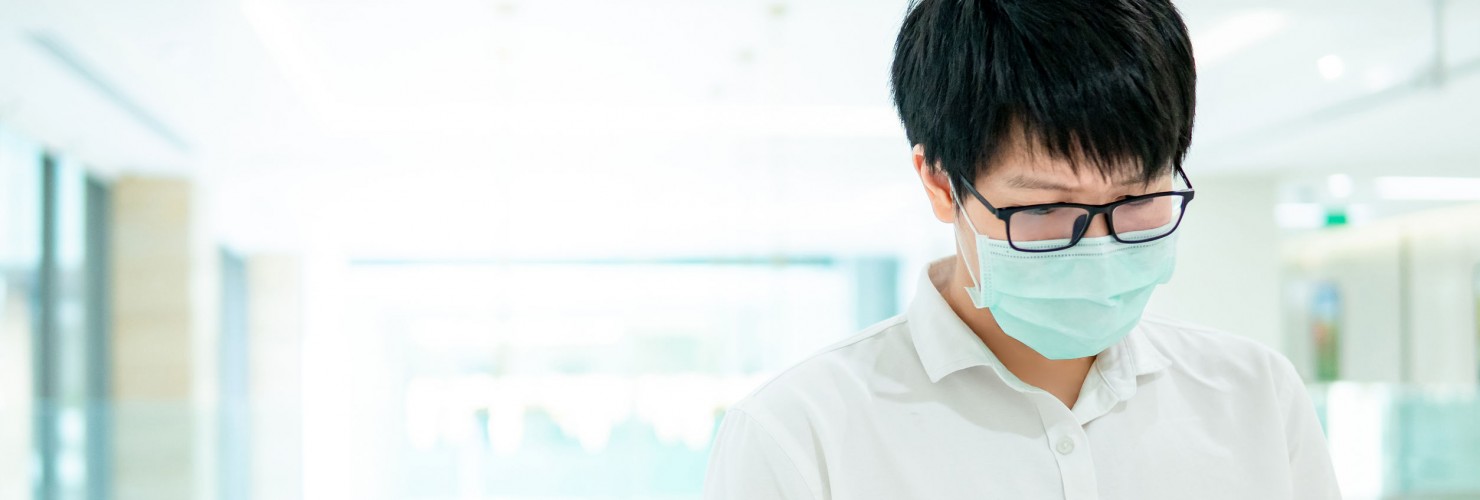

China’s fight against COVID-19 - Clicking for a cure
In its fight against the spread of the Coronavirus, Beijing is placing an awful lot of faith in untested AI and big data applications. Kai von Carnap says the world should use these new tools with caution.
The Covid-19 epidemic is profoundly changing the trajectory of China’s digital development and the role of artificial intelligence (AI), big data and other technologies. Rushing out virus-fighting digital solutions over the last couple of months has led to an even deeper friendship between Beijing and China’s tech giants. The Chinese Communist Party (CCP) is taking great risks to rollout barely tested large-scale digital solutions – that are likely to prove flawed.
Anyone running an online business in China in early 2020 will have a hard time hiding their glee. During the long weeks at home, many of the quarantined embraced the digital age to enjoy surprisingly bearable daily routines compared to epidemics of old times. Food delivery services, online education platforms and conference call conveners saw demand jump and e-commerce platforms saw sales – of anything from hair trimmers to game consoles – spike.
China’s tech giants have been essential in tackling the epidemic
The CCP has recently cosied up to these online and technology companies, but not simply because they provide digital bread and games. China’s tech giants have proven themselves to be essential in tackling the corona epidemic: some have helped uphold the image of a successful national crisis management, for example, by combining facial recognition with the screening of body temperatures at railway stations; others have helped reduce the evaluation time of corona tests from 10-15 minutes to only 20 seconds.
This has created the hope that emerging technologies will be the key to solving the corona crisis. After Hangzhou was locked down on 4 February, the district government enlisted Alibaba to come up with a digital solution. Only five days later the “Hangzhou Health Code” (杭州健康码) went live, an app that estimates the likelihood of users having contracted the virus. After volunteering information about travel history, links to confirmed cases and self-assessed health status users get a QR-code with one of three colors: green for “allowed to move freely”, orange for “recommended for seven-day quarantine”, red for “recommended for 14-day quarantine”.
Virus contraction screening apps proved unreliable
The app issued more than seven million QR-verdicts in three days. Most Hangzhou residents were given the green QR-codes, with which they could gain access to supermarkets or public transport. But the app also issued 316,000 red codes, to the frustration of many. Users reported inexplicably receiving red or orange codes, even after self-isolating for up to 20 days before the app’s roll out or returning to Hangzhou from corona-free regions. That led to questions about the reliability of green codes: some recipients reported they had not disclosed their symptoms, others were more honest and surprised to get a green code.
Despite tens of thousands of complaints and apparent inaccuracies, similar health check apps were introduced in over 200 cities, often replacing temperature checks and government issued paper clearances. It is not known how many green and red flags have been wrongly issued in Hangzhou and how well this QR-code system can predict the spread of the virus. Alibaba would not be the first company to fail at such a task. Google Flu Trends (GFT) was launched in 2008 to predict the spread of flu based on users’ online searches. The project was abandoned in 2015 after it wrongly predicted a series of influenza waves.
GFT discovered it could not produce useful virus predictions by relying on users’ input as a main variable. Tracking mobile phones may be a more advanced approach, but the Hangzhou Health Code and apps like it still rely on individuals’ input because other variables are too vague: Covid-19 transmission is not fully understood, satellite navigation is only accurate to within a few meters, people may not always carry their phones. Combining unreliable proxies of the virus’ spread does not make them reliable. These new data-driven systems are inevitably producing erroneous results – false positives and false negatives.
China’s government still wants more IT to support epidemic prevention
But enthusiasm for tech-based cures is proving contagious. China’s Ministry of Industry and Information Technology (MIIT) wants more “next-generation information technology to support epidemic prevention“ – specifically by using artificial intelligence, big data, cloud computing to “analyze epidemic situations, personnel flow, and community management“. It has enlisted China’s three telecoms companies to roll out their version of the Alibaba-inspired mobile app. The “Information Big Data Itinerary Pass” (通信大数据行程卡) now tracks China’s 1.6 billion mobile phones and allows its owners to check their health status.
The apps help Beijing in other ways, too. They are helping businesses to regain confidence, hence reviving the economy and reconnecting international supply chains. And they are establishing large data troves that perfect China’s surveillance apparatus, with little public pushback. According to the New York Times, personal data collected by the Information Big Data Itinerary Pass is sent to police servers – creating a real-time surveillance map of China’s online population. MIIT has said it wants to keep using the tool even after the epidemic.
Countries affected by Corona should resist the illusion of tech-driven quick fixes
The COVID-19 pandemic will no doubt produce technological breakthroughs in diagnosis and treatment. But lifting proven disease control measures – like temperature checks – and sacrificing privacy for hastily coded and untested predictive algorithms – based on users’ self-assessments – will not be among them. Indeed, the new AI and big data tools could breed an overconfidence that might prolong the spread. More and more countries around the world are turning to mobile phone data to fight the coronavirus waves engulfing them, including Germany and Israel. They should resist the illusion of tech-driven quick fixes – and acknowledge the risk that the virus could re-emerge from within China.